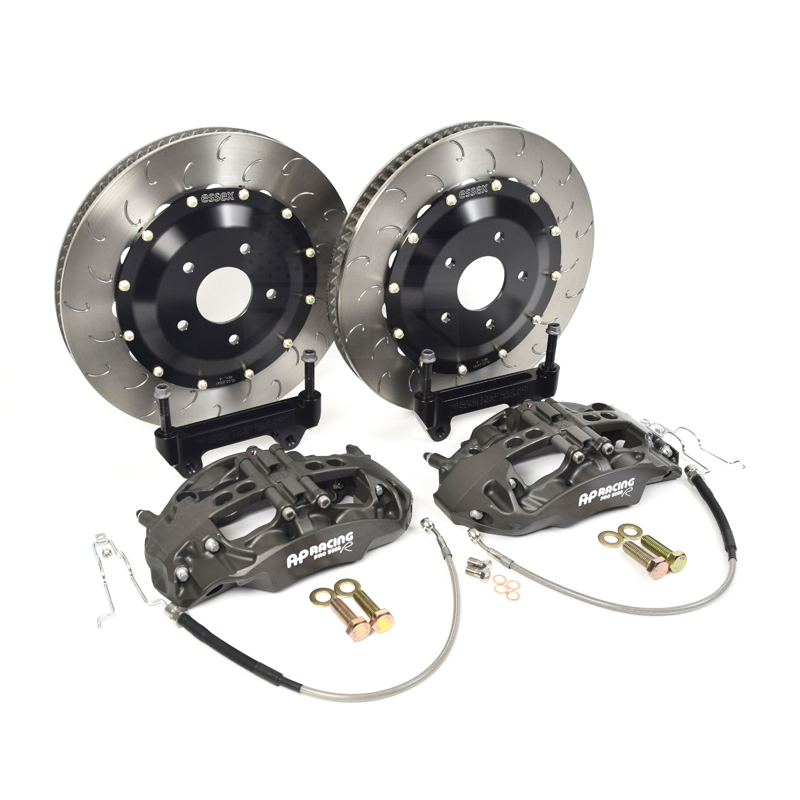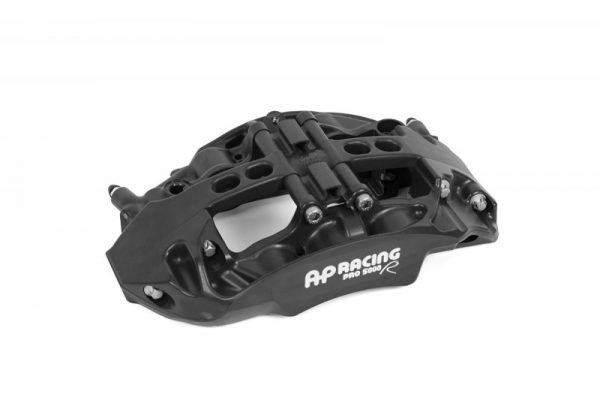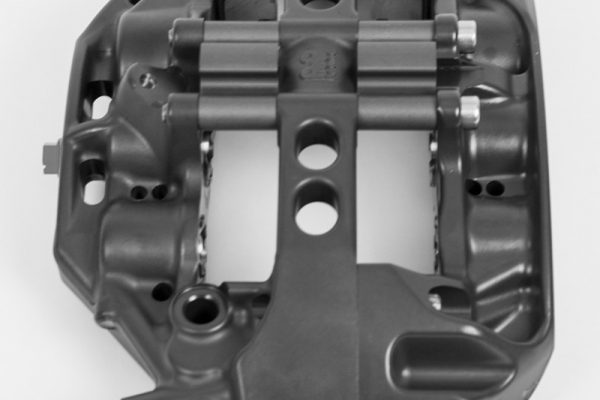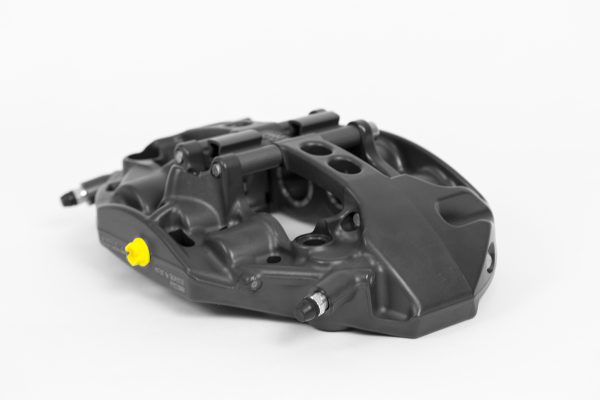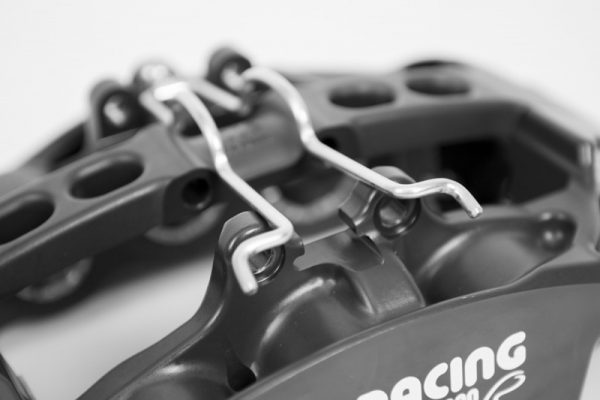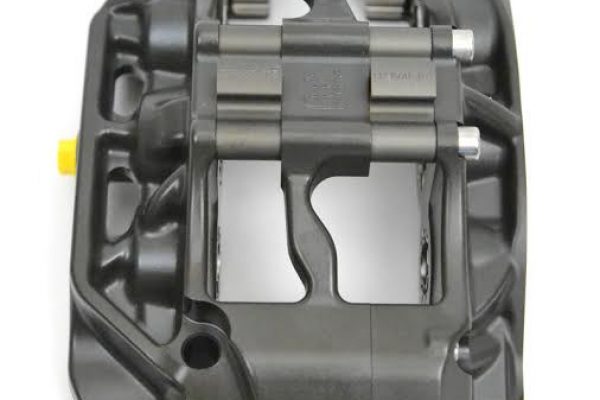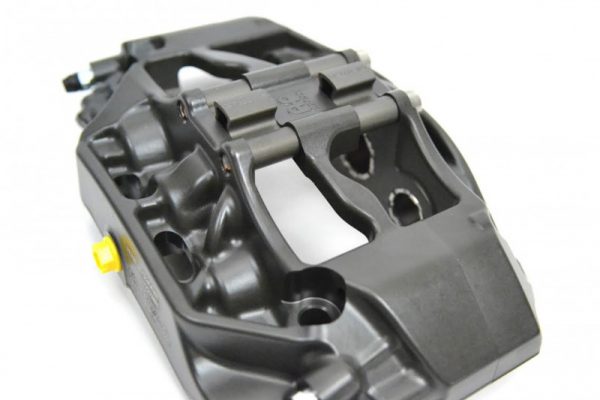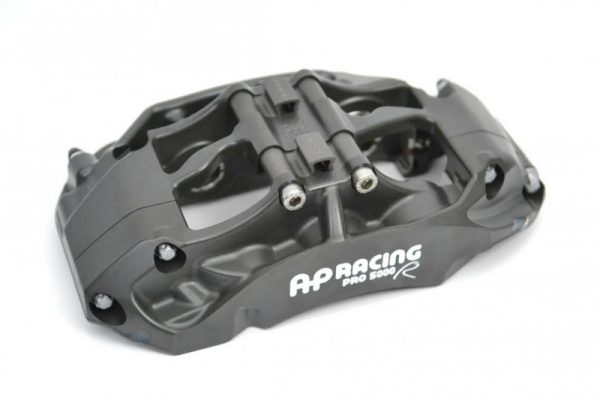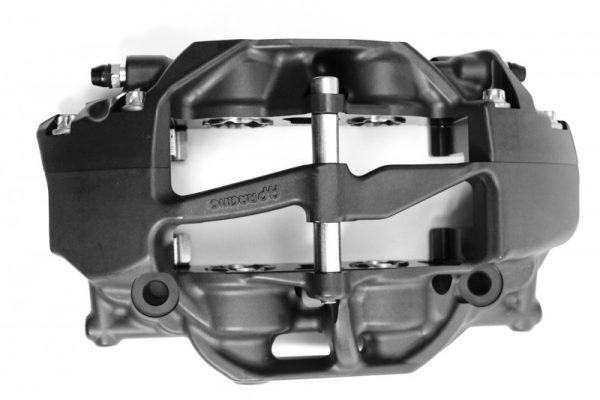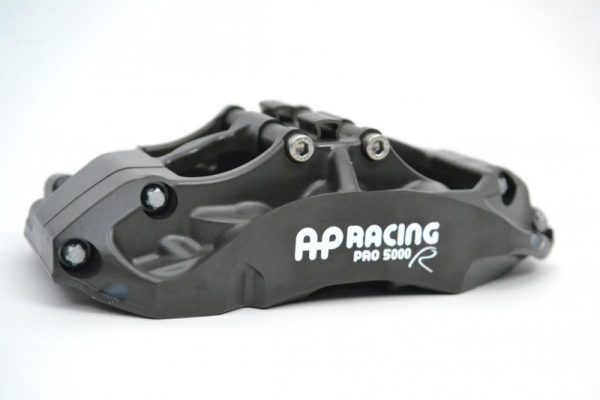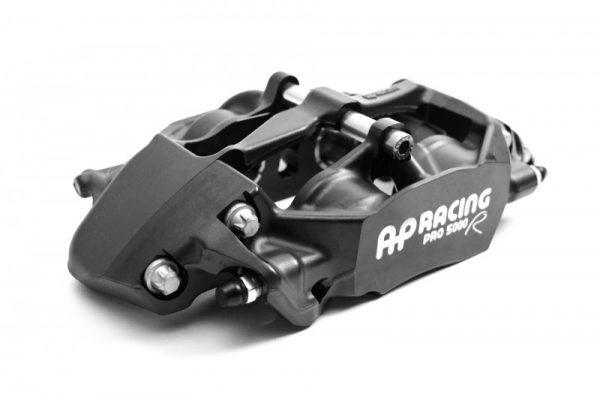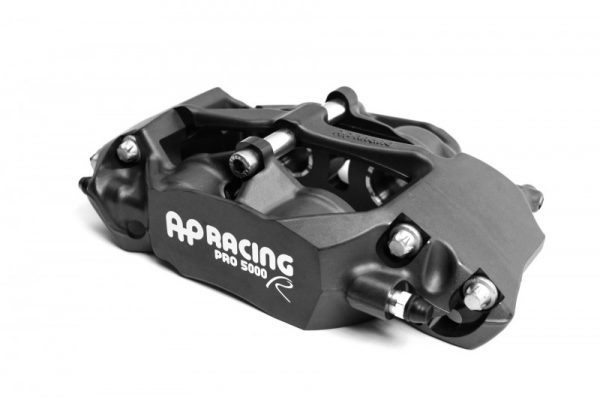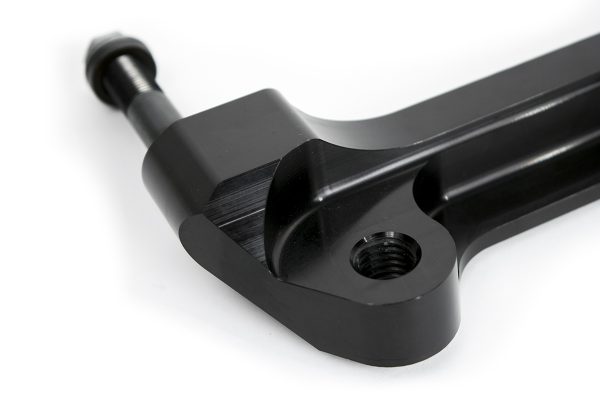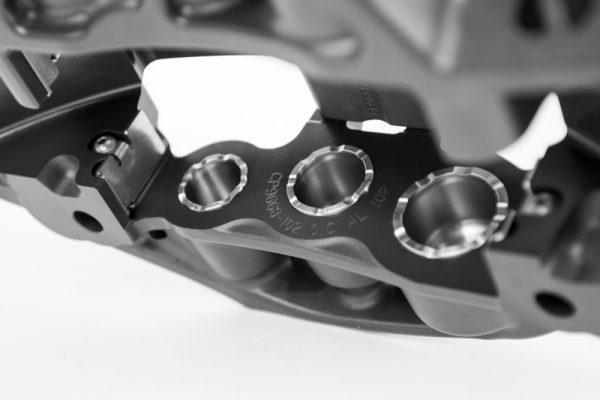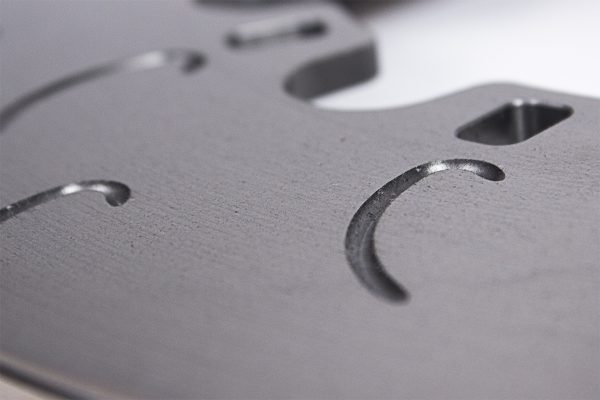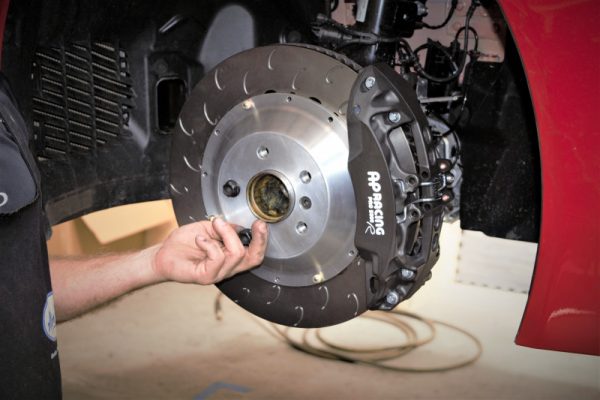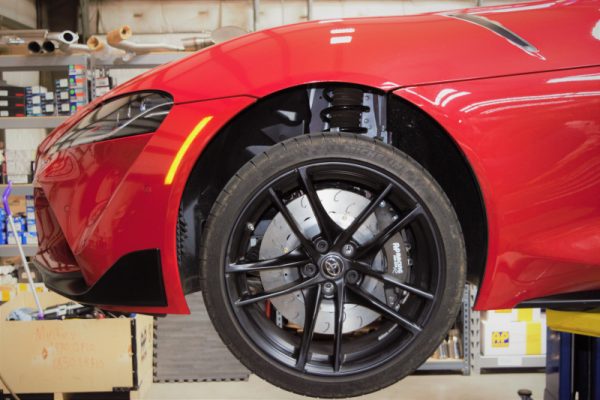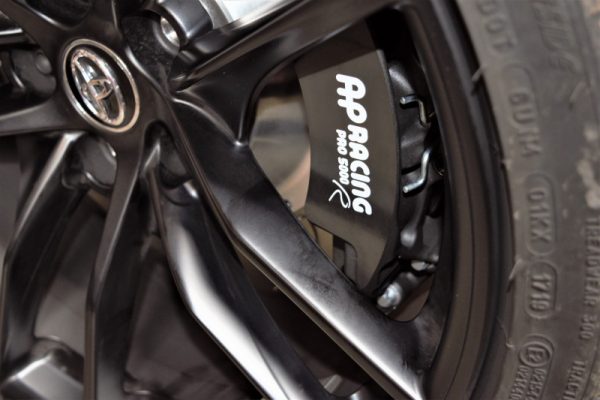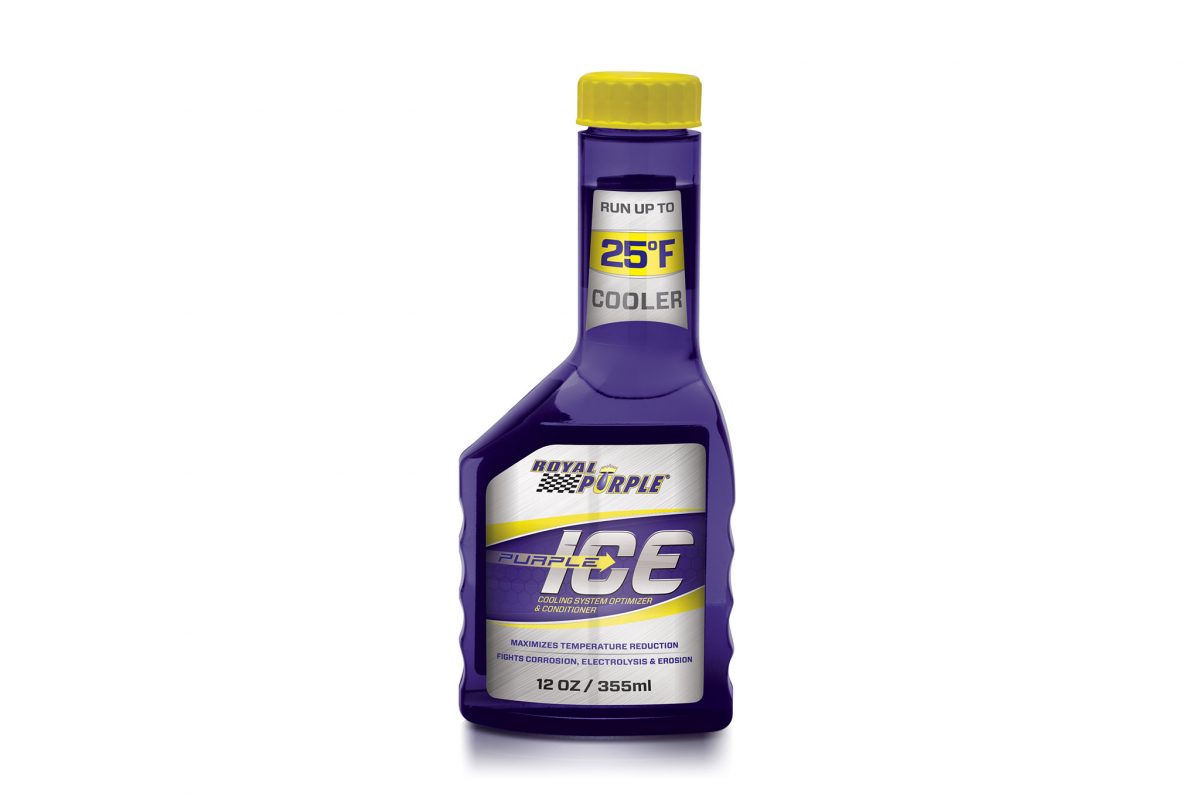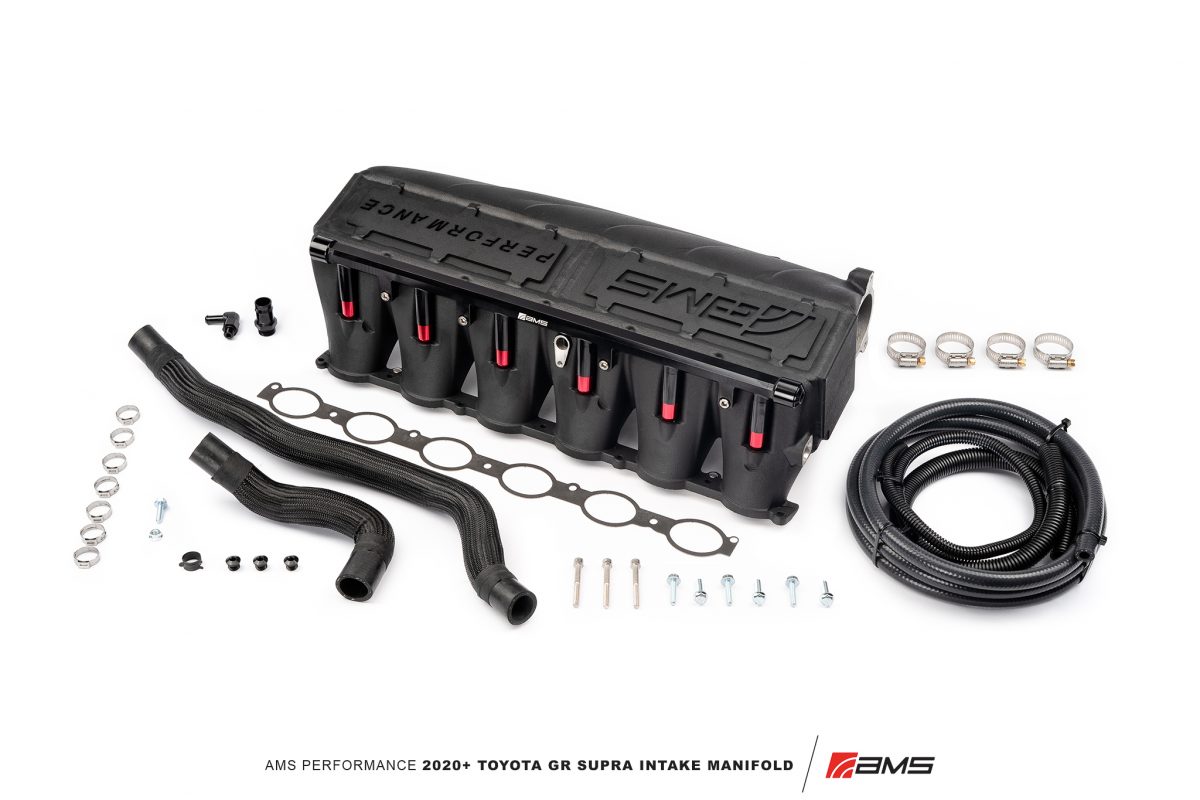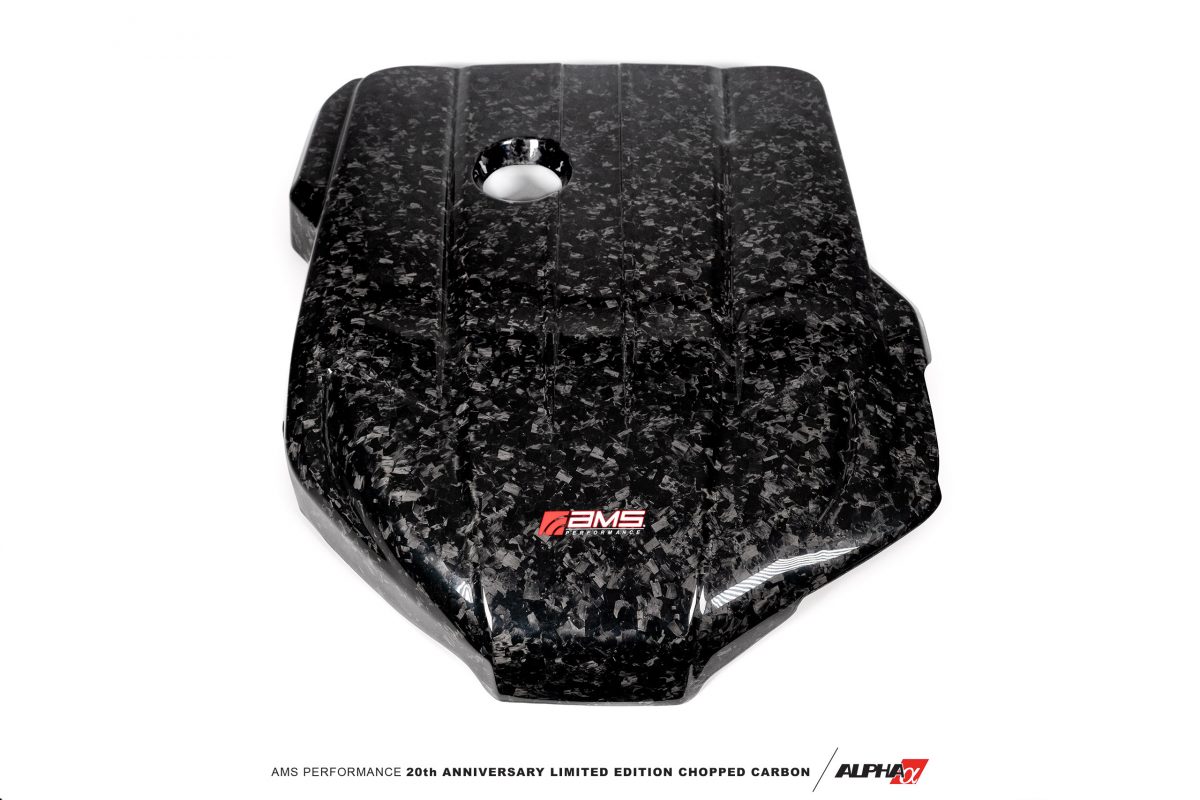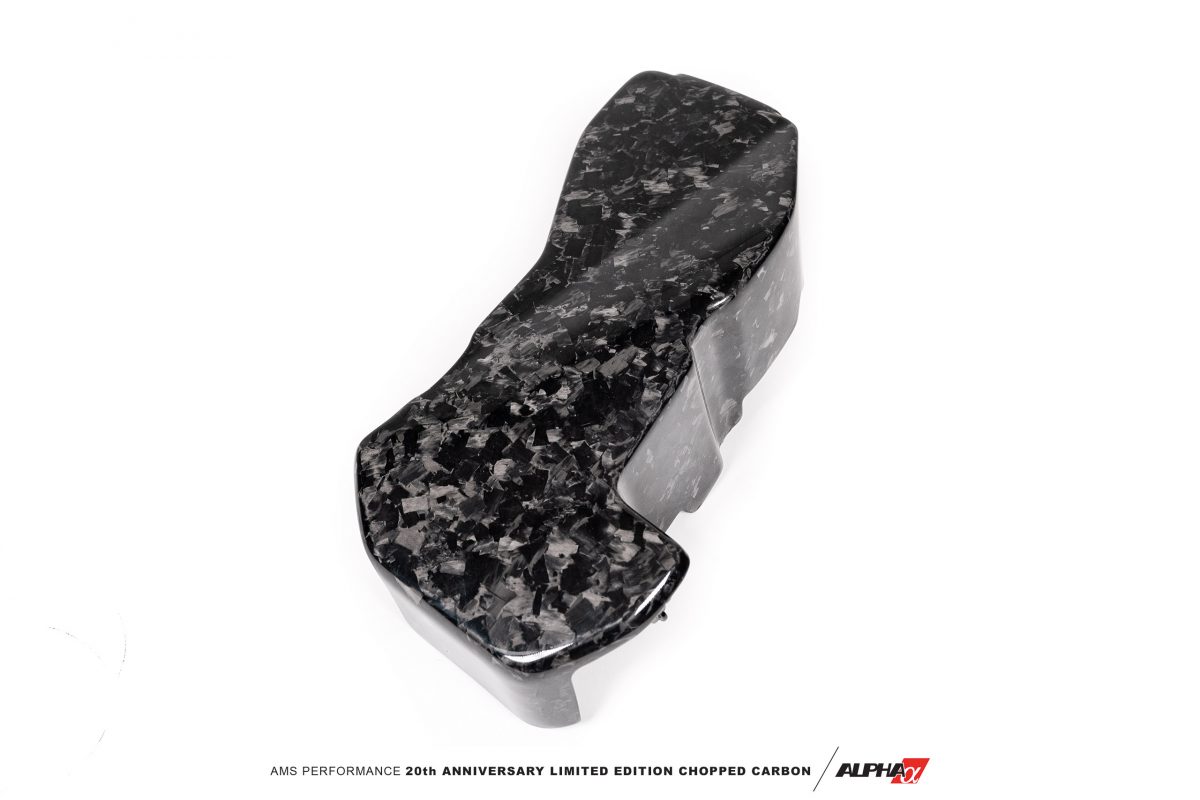Essex Designed AP Racing Radi-CAL Competition Brake Kit – Toyota GR Supra
$4,899.00 – $5,699.00
-
California Residents: Prop 65 Warning
Additional information
| Weight | 75 lbs |
|---|---|
| Option | Front CP9668 (372mm) – 25mm Pad, Front CP9660 (372mm) – 18mm Pad, Rear CP9450 (365mm) |
Non-Emissions Related
This product is either entirely unrelated to an emissions-controlled engine, or we believe this product does not affect vehicle emissions or any emission control devices on the vehicle it is intended for, that would be subject to any US State or Federal emissions standards. International users outside of the United States should act in accordance with their local laws and regulations.
With 24 years of documented research and development in the forced induction field, AMS Performance has proven itself as the powerhouse in the automotive aftermarket. Our award winning performance systems are what all others are measured by.
Complete front Essex Designed AP Racing Radi-CAL Competition Brake Kit for the Toyota GR Supra:
Features AP Racing CP9668 Radi-CAL calipers
372x34mm, 84 vane AP Racing disc
Saves 23 unsprung lbs. from nose vs. OEM brakes!
Clears the OEM Supra wheels without a wheel spacer
Will fit behind many aftermarket 18″” track wheels
Every component designed to resist the heat of extended track sessions
Pistons sized properly to maintain proper brake bias and work with the OEM master cylinder and ABS system
Front kits designed to work with either OEM rear brakes or our rear AP Racing BBK
Which AP Racing Radi-CAL is Right for Me, the CP9660 or CP9668?
Unsprung Weight Savings vs. OEM Brake Components
Below is a grid that shows the OEM brake component weights vs. our AP Racing by Essex Brake Kits. Despite having more pistons and significantly larger discs, our front Road Kit weighs nearly identical to the OEM system, while our four wheel Competition Kit shaves roughly 45 lbs. of unsprung weight from the car! The front and rear OEM discs do have an aluminum hat riveted to an iron outer ring, but they do not have the ability to float in any manner.
| Weight in lbs. | OEM GR Supra | AP Racing by Essex CP9668/372mm Competition Brake Kit |
AP Racing by Essex CP9561/380mm Road Brake Kit |
| Front Disc with hat | 28.8 (348x36mm) | 21.0 (CP6084, 372x34mm) | 26.9 (CP7177, 380x36mm) |
| Front Caliper | 9.2 (four piston) | 6.8 (CP9668 six piston) | 9.8 (CP9561 six piston) |
| Front Caliper Bracket | integrated | 0.7 | 0.8 |
| Front Pads | 8 | 6.4 | 8.4 |
| Front brake weight per side | 46 | 34.9 | 45.9 |
| Weight removed per side | -11.1 | -0.1 | |
| Total removed from nose of car | -22.2 | -0.2 | |
| Rear Disc | 18.4 (345x24mm) | 14.5 (CP5914, 365x30mm) | NA |
| Rear Caliper | 13.2 (single piston slider) | 4.9 (CP9450, four piston) | NA |
| Rear Caliper Bracket | integrated | 0.5 | NA |
| Rear Pads | 3.2 | 3.7 | NA |
| Rear brake weight per side | 34.8 | 23.6 | NA |
| Weight removed per side | -11.2 | ||
| Total Removed from rear of car | -22.4 | ||
| Total unsprung lbs. removed from front/rear of car | -44.6 |
Radi-CAL
“Radi-CAL” is a blanket term used to describe AP Racing’s patented asymmetrical brake caliper design. Radi-Cal technology is grounded in Computer Aided Design (CAD) and Finite Element Analysis (FEA), and allows for organic, alien-looking designs that are a radical departure from conventional caliper designs of the past. Radi-CAL’s are widely considered the pinnacle of current brake caliper technology. Since their inception in 2007, these revolutionary calipers have amassed a lengthy string of race victories at all levels of professional motorsport, while redefining brake performance expectations. For more details on the design concept and what these calipers have achieved in professional racing, please visit our blog and read The AP Racing Radi-CAL Story.
The key benefits of the Radi-CAL design:
- Massive Stiffness Increase– A 30+ % increase in both static and dynamic stiffness vs. conventional calipers allows for far less deflection under load, which means superior pedal feel & modulation, more even pad wear, and longer caliper service life.
- Considerable Mass Reduction– Removing all extraneous caliper mass lowers the caliper weight, despite the huge stiffness increases.
- Optimized Airflow– Air moves around and through the caliper more efficiently, providing superior heat evacuation and cooling.
- Efficient Packaging– The asymmetric caliper profile and internal fluid porting allows the caliper to fit into tighter spaces.
Calipers
CP9668 Pro5000R, The Everyman Radi-CAL

It has taken eight years, numerous generations of the design concept, and advancements in manufacturing techniques, but the Radi-CAL has finally evolved into a viable solution for racers and enthusiasts of all levels and budgets. While many products are supposedly born in racing, there can be no doubt about the Pro5000R pedigree. These calipers are direct descendants of the current crop of F1 and Sprint Cup calipers. They don’t look ordinary, because they’re not ordinary. They’re the epitome of pure racing design: elegant, sparse, and brutally effective. And while they embody and employ the Radi-CAL design philosophy of the past, they also add some outstanding new features that enhance their practicality, convenience, and appeal. Quite simply, they are the lightest, stiffest, and most technologically advanced brake calipers that have ever been within the average enthusiast’s grasp.
These intricate calipers have traditionally been machined from proprietary aluminum alloy billets. As one can imagine, machining away all of that material to achieve the final form is both time-consuming and costly. As a result, the price of these calipers has historically been prohibitive for the average club racer, time-trialer, or HPDE participant. Fortunately, the Pro5000R calipers use a new drop-forging technique that has dramatically lowered the manufacturing cost and the resulting price of entry, bringing this incredible technology to the masses.
CP9660 Pro5000R, The Everyman Radi-CAL

It has taken eight years, numerous generations of the design concept, and advancements in manufacturing techniques, but the Radi-CAL has finally evolved into a viable solution for racers and enthusiasts of all levels and budgets. While many products are supposedly born in racing, there can be no doubt about the Pro5000R pedigree. These calipers are direct descendants of the current crop of F1 and Sprint Cup calipers. They don’t look ordinary, because they’re not ordinary. They’re the epitome of pure racing design: elegant, sparse, and brutally effective. And while they embody and employ the Radi-CAL design philosophy of the past, they also add some outstanding new features that enhance their practicality, convenience, and appeal. Quite simply, they are the lightest, stiffest, and most technologically advanced brake calipers that have ever been within the average enthusiast’s grasp.
These intricate calipers have traditionally been machined from proprietary aluminum alloy billets. As one can imagine, machining away all of that material to achieve the final form is both time-consuming and costly. As a result, the price of these calipers has historically been prohibitive for the average club racer, time-trialer, or HPDE participant. Fortunately, the Pro5000R calipers use a new drop-forging technique that has dramatically lowered the manufacturing cost and the resulting price of entry, bringing this incredible technology to the masses.
CP9450 Pro5000R, The Everyman Radi-CAL

It has taken eight years, numerous generations of the design concept, and advancements in manufacturing techniques, but the Radi-CAL has finally evolved into a viable solution for racers and enthusiasts of all levels and budgets. While many products are supposedly born in racing, there can be no doubt about the Pro5000R pedigree. These calipers are direct descendants of the current crop of F1 and Sprint Cup calipers. They don’t look ordinary, because they’re not ordinary. They’re the epitome of pure racing design: elegant, sparse, and brutally effective. And while they embody and employ the Radi-CAL design philosophy of the past, they also add some outstanding new features that enhance their practicality, convenience, and appeal. Quite simply, they are the lightest, stiffest, and most technologically advanced brake calipers that have ever been within the average enthusiast’s grasp.
These intricate calipers have traditionally been machined from proprietary aluminum alloy billets. As one can imagine, machining away all of that material to achieve the final form is both time-consuming and costly. As a result, the price of these calipers has historically been prohibitive for the average club racer, time-trialer, or HPDE participant. Fortunately, the Pro5000R calipers use a new drop-forging technique that has dramatically lowered the manufacturing cost and the resulting price of entry, bringing this incredible technology to the masses.
Radi-CAL= Ultra-lightweight, Compact Design with High Airflow
As mentioned above, the Radi-CAL design philosophy is just as much about what isn’t there, as it is about what is there. The Radi-CAL design relocates caliper mass, creating voids that would traditionally not be located where they are. As such, considerable mass is removed from the body, and the entire envelope of the caliper is optimized. The result is an extraordinarily lightweight and compact footprint. Whereas many competing six piston calipers weigh in the 9-12 lb. range, the CP9668 weighs an astounding 6.8 lbs.!
The Essex mantra when designing brake kits has always been, “Anything larger than necessary to get the job done is simply dead weight to drag around,” and the Radi-CAL aligns perfectly with those values. One of the major problems with many of the brake packages currently on the market is wheel fitment. You’re offered gigantic discs and 12 piston calipers, with a pat on the back and a, “Good luck finding wheels to clear those things (insert sinister chuckle here).” The reality is that many casual racers want to use their OEM wheels on the track, or the smallest, lightest wheel they can find. Not only is saving unsprung weight critical, R compound tires are much more plentiful and cheaper for smaller wheels. If the components are designed properly with heavy use in mind, you don’t need to cram boat anchors under your wheels. If you’re worried about the loss of stiffness due to mass reduction, don’t. Some manufacturers use a heavier six piston caliper, but that’s because the caliper wasn’t designed or optimized for racing. In those cases, the same caliper may have been designed for use on much heavier road cars, and even trucks! AP Racing’s Pro5000R calipers are incredibly stiff, and designed from scratch with only the racetrack in mind.
Take a look at the caliper above or below. Anything else missing? Outer bleed screws and crossover tubes! The Pro5000R range has internal fluid porting and only two bleed screws located on the inner caliper half. That means that the chance of knocking a bleed screw or denting a crossover pipe during a wheel change virtually disappears. It also means that you now have half as many bleed screws to turn when changing your brake fluid. Eliminating the piping and bleed screws also allows the outer corners to be rounded, improving wheel spoke clearance.
Finally, take a look at the picture below. Compared to a traditional caliper, the pistons and brake fluid pathways have far more airflow between and around them, lowering the overall system operating temperature.
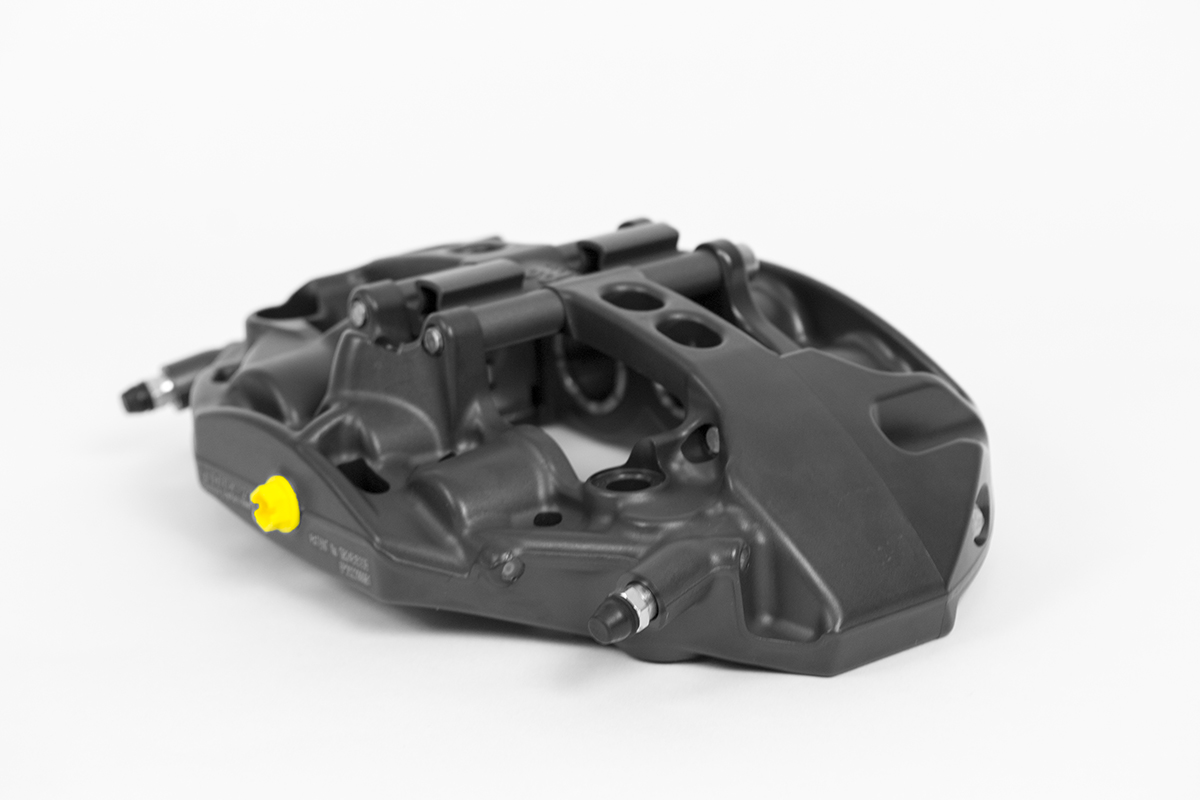
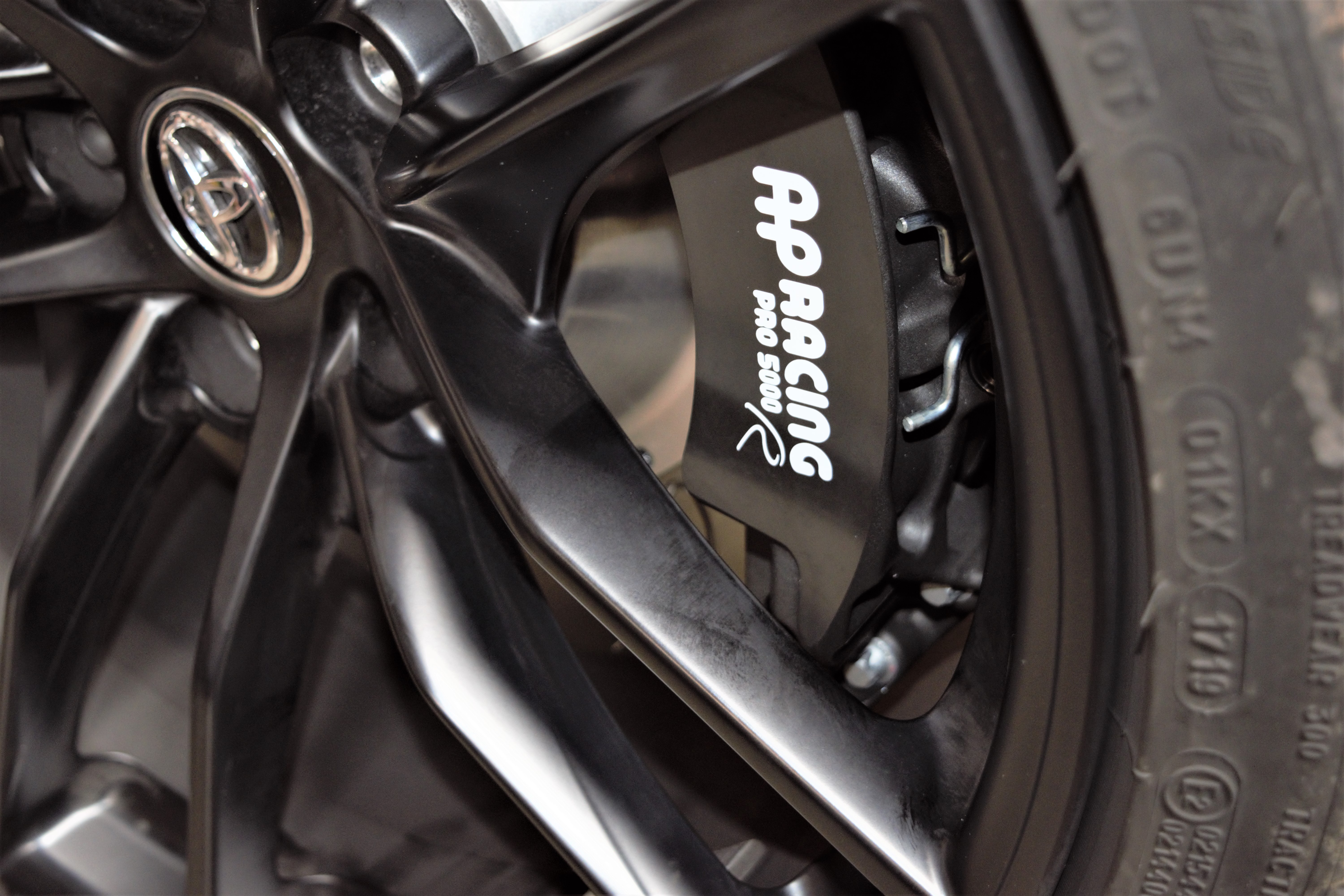
Two-piece, Drop-Forged Caliper Body
Radi-CAL’s such as the one in Figure 2 above have traditionally been machined from a single, solid block of proprietary aluminum alloy (monobloc). With a monobloc design, the piston bores and piston seal grooves can only be machined with a right angle machine tool (the tool must be inserted up and into the caliper). As one can imagine, machining away all of that material with special tools and multiple setups to achieve the final form is both time-consuming and costly. As a result, the price of monobloc Radi-CAL’s has historically been prohibitive for the average club racer, time-trialer, or HPDE participant. The Pro5000R has been made possible by a newly developed 2-piece drop-forging process, which allows a conventional machine tool to access the piston bores via a direct path. The result is a drastic reduction in both production time and cost, while still retaining an incredibly stiff form.

Hard Anodized Finish
The first obvious weakness when looking at a typical aftermarket caliper is the finish. Most aftermarket calipers come in a painted finish, whether they are red, black, or gold. That painted finish is designed to look pretty and prevent corrosion in harsh winter environment. Unfortunately, for all of the compliments painted calipers generate, there is an associated price if you drive the car in a track environment. That price is the chipping, flaking, fading, color shift, and general degradation of that finish in a fairly short period of time. Some OEM calipers can go from the as-delivered color to a nasty shade of brown in as little as one weekend. While this is typically worn as a badge of honor among our more hardcore customers, let’s face it…they still look terrible. More importantly however, all of those bits of paint end up in places they’re not supposed to, which we’ll get to in a minute.
Why does this happen? Heat. Paint and powder coat cannot adequately handle track temperatures. Powder coat also has some notorious issues with shrinkage. The powder coat layer expands and grows when the caliper is heated. When it cools, the powder coat doesn’t necessarily shrink in step with the caliper body itself. What’s left is a loose shell of finish hanging limply on the caliper body. That shell then cracks and falls to pieces.
Paint can also have similar issues depending on how it is applied. If you were to line up a few aftermarket calipers from the same manufacturer, you would likely see that the painted finish on each of those calipers is slightly different. Some have a thicker coat, some thinner, slightly different shades of red, etc. Painting is to some extent an art form, and must be performed in a tightly controlled environment. If it isn’t, you’re always going to see variation. A thick coat makes the part look soft around the edges, and is prone to cracking off in the same manner as the powder coat described above, leaving the underlying finish exposed. A part without enough paint will look uneven, and will not protect the underlying aluminum particularly well either. In addition to problems with cracking, flaking, and uneven application, paint and powder coat also experience extreme color shift when heated. Red becomes maroon or black, gold becomes brown, and black just gets uglier.
The calipers we are using in the Essex Radi-CAL Competition Kits are ultra-lightweight, stiff, and durable under all track conditions. The finish is a hard anodizing, which is the business under track conditions. When raw aluminum reacts with the oxygen in the air, a hard surface film develops on aluminum which prevents further degradation. The process is called oxidation, and you can think of it like rust. The anodizing process leverages this natural phenomenon, and takes it a step further to produce an extremely hard protective layer of aluminum oxide. It does so by running an electrical current through an acid bath, and dying it to the desired color. If you want to know more, Google it.
The result is a finish that is far more appropriate for racetrack use. Anodizing creates a uniform surface that is much more abrasion resistant than paint or powder coat. That means if you ding an anodized caliper with a box wrench when bleeding it, a big chunk of the finish isn’t going to chip off into your hand. While anodized calipers will still exhibit color shift, it will take a lot more heat to get them to change, and they won’t change as dramatically. More importantly though, you aren’t going to have bits of anodizing sticking to the sides of your pistons.
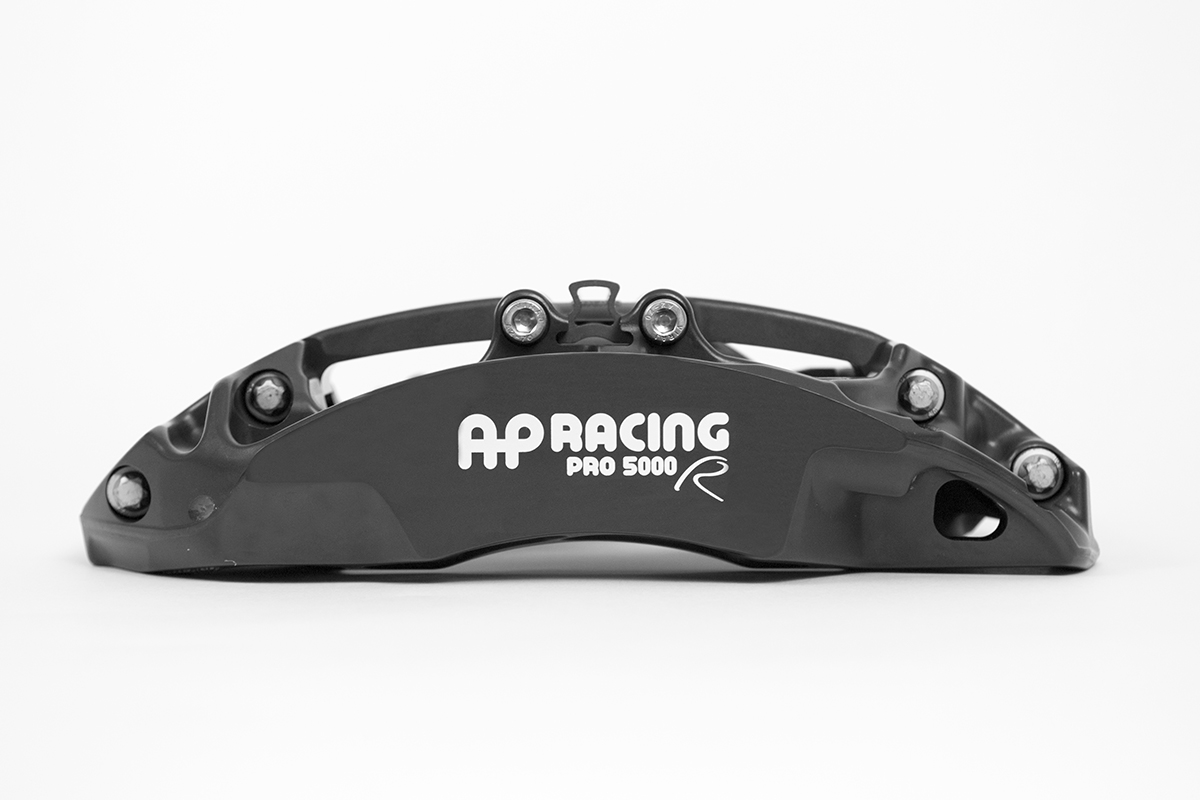
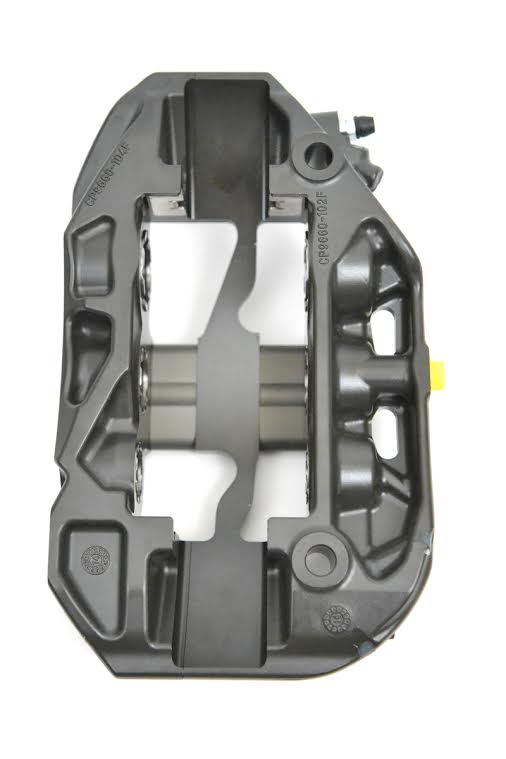
AP Racing CP9660, OEM Supra front caliper, AP Racing CP9668
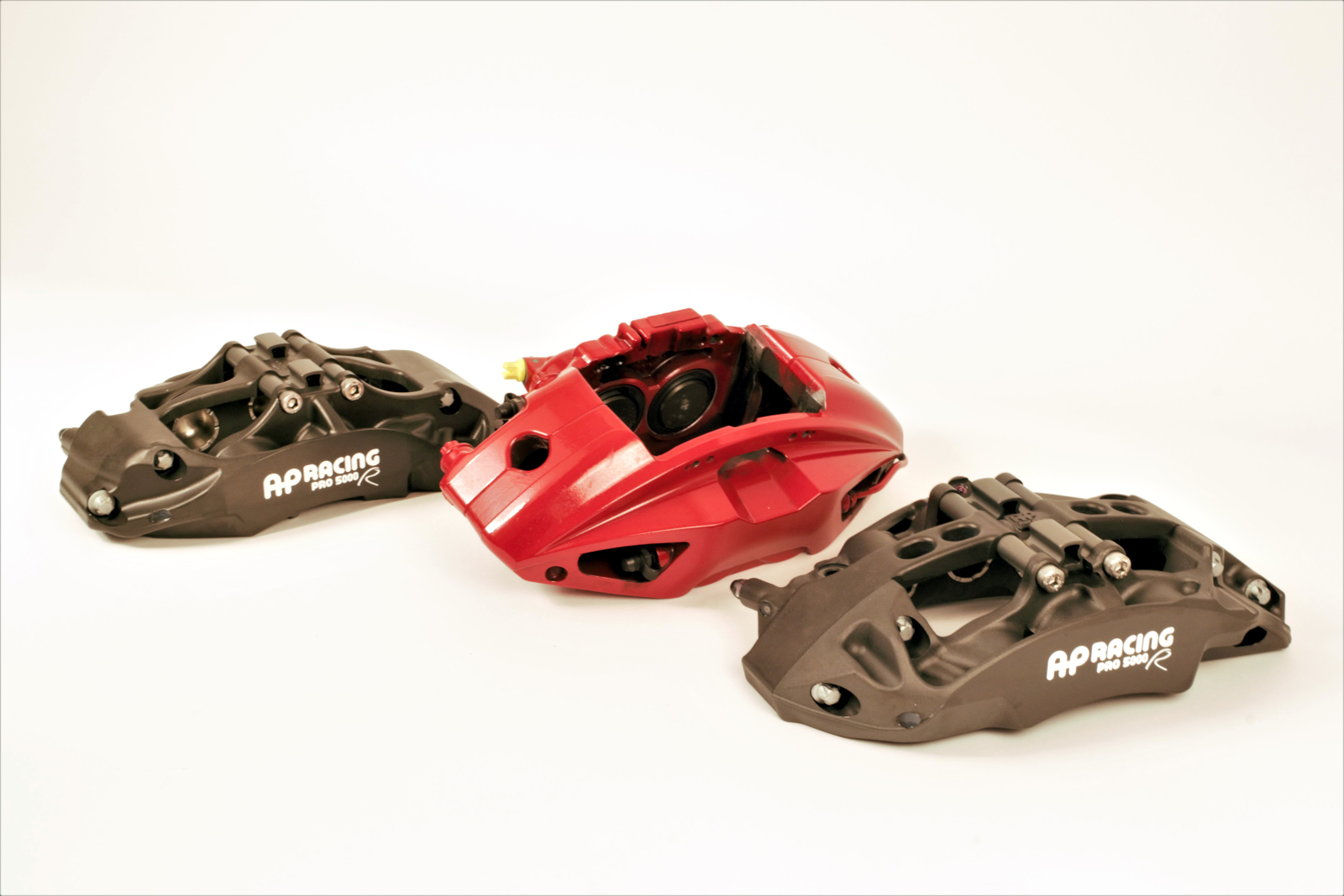
Brake Pads in A Commonly Available Shape
The basic pad shapes for the Pro5000R calipers were created by AP Racing many years ago, and are used by a wide range of racing calipers today. They’re available in just about every popular racing compound on the market. That means you’ll never end up in a pinch without pads.
Below is a drawing of the basic pad shape:

Dimensions= 152.1 x 54 x 25 mm
Pad Retention Loop
The basic pad shape above comes from some manufacturers with a small loop on the top edge (the portion above the red line in the drawing above). On certain calipers a pad retention pin is placed through that loop to hold the pads in place. That small loop is not used in the AP Racing Pro5000R Radi-CAL’s however, and must be removed for the pads to fit properly (it can be sawed or ground off in a matter of seconds).
Pad Thickness, CP9660 caliper (18mm) vs. CP9668 caliper (25mm)
For many of the platforms we are servicing, we have both the CP9660 and CP9668 calipers available. The biggest difference between these two calipers is the thickness of the pads that they can accommodate. The CP9660 caliper uses an 18mm thick pad in the above shape, while the CP9668 caliper uses a 25mm thick pad. Which one is right for you? If you’re running multi-hour endurance races, or want to reduce the frequency of pad changes, the CP9668 is likely your proper choice. If you’re running standard 20-40 minute HPDE/Time Trial sessions, or sprint races, the 18mm thick pads will be more than ample. There are two primary tradeoffs when going with the CP9668 caliper: It is about a pound heavier (including the difference in pad weight), and roughly 14mm wider than the CP9660. You will lose that 14mm on wheel spoke clearance vs. the CP9660 kit, so please make sure to check both fitment templates if you’re debating caliper choice.
The available pad compounds that Essex sells for the CP9668 caliper can be found below. Please keep in mind that there are many other compounds available on the market from other manufacturers. The list below represents only what Essex sells. Underneath the manufacturer list below, the pad compounds are listed from most aggressive to least aggressive.
Ferodo Racing
Mintex
Note on using brake pads different from those listed above
Again, please keep in mind that the above is not an exhaustive list, and that there are many other pad compounds available in this shape from other manufacturers. Please note however, that the pad shape we use in our caliper is available in a variety of radial depths (heights), and that Essex recommends the 54mm radial depth version. Another common radial depth in this pad shape is 51mm. The 51mm depth pads will fit into our caliper, but you will be leaving an unswept ‘ring’ around the disc near the attachment points to the hat (the pad will not hang as low in the caliper). Leaving a portion of the disc face unswept can create a temperature differential across the face of the disc, and doing so could lead to premature disc cracking.
Pad Cross Reference
Since we do not sell most of the brands listed below, Essex cannot guarantee the fitment of these pads in the AP Racing CP9668 caliper, and they may need to be modified as shown above (loop removed). Based on our research however, we believe that these are the appropriate cross references for the basic shape. However, you should verify with either the manufacturer or your installer prior to purchasing any of them for use in the Pro5000R calipers.
| Manufacturer | Part Number | 18mm | 25mm | Depth |
| Alcon | PNF4489X532.4 | X | X | 52 |
| AP Racing | CP3894D54 | X | X | 54 |
| Brembo | B51 | X | X | 54 |
| Carbotech | CTP7790A | X | 54 | |
| Circo | MB1658-25 | X | X | 54 |
| CL | CL5009 | X | X | 54 |
| Cobalt | AP19 | X | X | |
| EBC | (DP2006, DP3006C, DP4006) | X | 54 | |
| Endless | RCP086 (D52) | X | X | 52 |
| Ferodo | FRP3014 | X | X | 54 |
| Hawk | HB109 | X | X | 54 |
| Mintex | 1852 | X | X | 51 |
| Pagid | U1903 | X | X | 54 |
| PFC | 7790.XX.18 | X | X | 54 |
| Porterfield | AP7790 | X | X | 54 |
| Project Mu | F1090 (D52.5) | X | X | 54 |
| Raybestos | R2600 | X | X | 54 |
| Wilwood | 8825 | X | X | 51 |
Ventilated, Domed Back, Stainless Steel Pistons
There are people who will tell you that aluminum pistons are great for track calipers. They will tell you that the expansion rates of the pistons and caliper body need to be the same when heated. This argument is completely invalid and unproven. Those same people tend to get upset when you point out the fact that every serious race caliper, from every serious race caliper manufacturer on the planet uses either stainless steel or titanium pistons, period. There is a reason for this: they’re better!
Stainless steel pistons are far superior to aluminum pistons in creating a thermal barrier. They are much better at keeping heat out of your brake fluid and preventing a soft pedal from fluid fade on the track. This has been proven over and over again at all levels of motorsport. While most aftermarket calipers use a pressed aluminum piston, the Pro5000R’s use an expensive machined stainless steel piston.
To add stiffness to the pistons, AP designed the back of the piston with a domed back. At first glance this seems like a trivial design element. It is not. When domed back pistons were introduced in professional racing, driver feedback was immediate and resoundingly positive. The domed back adds considerable stiffness that can be felt through the pedal, and they have now become the standard vs. which all designs are judged.
For even greater heat resistance, there is ventilation on each piston. The air gaps around the piston edge allow for even more cooling air circulation around the pistons. All of these features slow and repel the influx of heat into the brake fluid, preventing brake fluid boiling and fade.

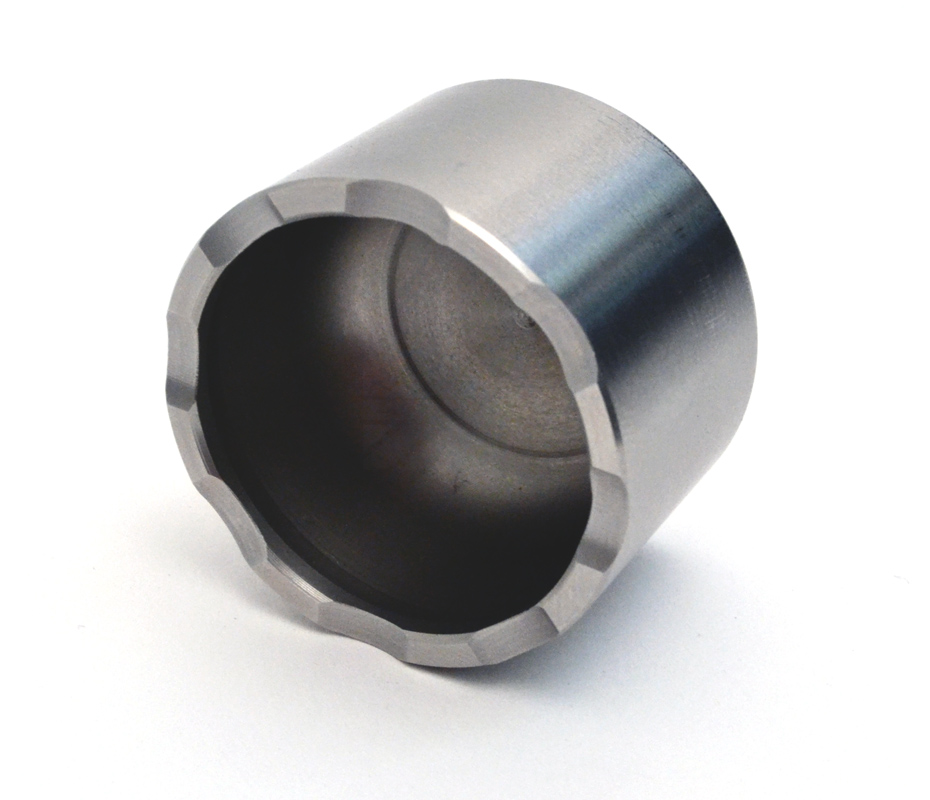
Anti-knockback Springs
Not only are the pistons stainless steel, they are also fitted with anti-knockback springs. Springs in pistons you ask? Yes, springs. If you’ve ever gone through a series of S turns and then had your pedal drop when going into the following brake zone, you have experienced knockback. To say it is disconcerting is an understatement. You’ll often see pro drivers ‘pre-tap’ their brakes lightly when approaching a brake zone. They are fighting knockback.
Knockback is a phenomenon that is common with fixed calipers. Knockback occurs when your car’s wheel, hub, and bearings deflect during cornering, allowing your brake disc to move out of sync with your caliper and brake pads. The amount of knockback varies by vehicle, and depends on the amount of deflection seen in the parts listed above. As the brake disc deflects, it actually pushes the pads away from each other, forcing the caliper pistons back into their bores. The piston seals don’t have enough tension in them to completely return the pistons to their original location. That means there is slack in the system that needs to be taken up. When you press the brake pedal, it will continue to drop until that slack is taken up.
Anti-knockback springs help alleviate this situation by putting some tension on the back side of the pistons. When the disc deflects and makes contact with the pistons, the springs push the pistons back into their proper location, reducing slack in the system. That means less pedal drop and far fewer pucker-factor moments when going into heavy brake zones.
There are no major downsides to lightweight AKB spring as long as the caliper is designed to accommodate them. More specifically, AKB springs do not create any increased drag or wear on the pads and discs as long as the shape and material of the piston seals takes them into account.
As you’re driving the suspension is constantly compressing, the disc is moving around laterally, and the pads are being pushed slightly away from the disc. Think of the seals in the caliper as a spring or hinge attached to the side of the piston, rather than just a ring through which the piston slides. In an AP Racing competition caliper, the groove in which the seal resides isn’t a square cut groove.It has angles. When the pistons slide in or out there is friction between the outer piston wall and the seal, and the seal distorts a bit as shown in the illustration below.
A caliper piston sliding out to the left would
distort the seal in this manner (the slashes are the seals on either
side of the piston):
/
—
—
As the piston slides back in to the right, the seal does this:
—
—
/
There is a certain amount of tension or friction that needs to be overcome before the piston actually starts moving through the seal ring. That tension/friction keeps the piston from dragging on the disc once the pistons are pushed back into the bores by the disc/suspension movement.
